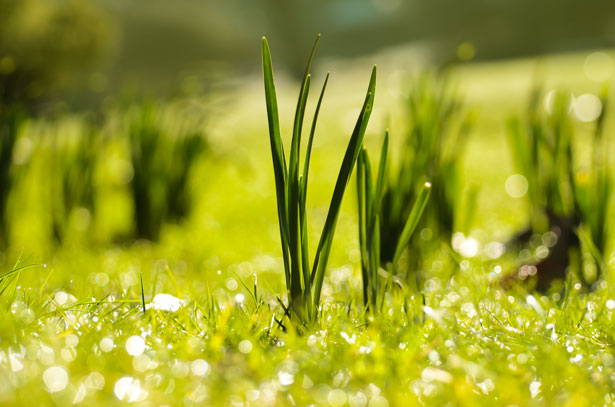Hold On! Spring is Coming

This time of year–the transition from winter to spring–is one of the toughest times of the year for me. Looking back over my work history, I’ve quit almost every job in the month of March. Coincidence? Perhaps, but I’m thinking it was more likely that I’d reached an emotional breaking point where I wanted to scream “I can’t take it anymore!” Each time I recall feeling distressed and panicky, desperate for relief. Now that I know more about my diagnosis I understand that work stress and seasonal transitions cause me to become unstable.
I find the transition from fall to winter challenging as well, but there are a few unique things about this time of year that seem to create instability in myself and others. In the fall, although the days grow shorter and it gets dark earlier, in general it’s mostly sunny, there’s little rain, the leaves are beautiful and the grass is still green. This will vary, of course, depending on where you live.
In early spring, it’s still damp and cold, often windy, with a lot of gray and rainy days. Everywhere you look, nature offers up brown vegetation and bare branches. Not very inspiring or uplifting. I’ve found that I actually do better in the winter months because it’s brighter outside. The sun reflects off the snow and I can’t see the dead grass hiding underneath. Gray days usually zap both my motivation and mood, leading to a slow slide into depressive symptoms.
As part of learning to live well with bipolar ll, I’d like to share a few things I do to stay emotionally in balance this time of year. I encourage you to try one or two of these ideas or come up with your own list based on what you find enjoyable. These are also good ideas to try when, despite our best efforts, we begin to feel unstable.
* expose yourself to sunlight as often as you can. Sit near a sunny window or take a short walk. On cold days I’ve sat in a lawn chair on the sunny side of my house, out of the wind’s reach. You’d be surprised how warm it feels.
* if you’re financially able, take a trip somewhere warm and sunny. It will provide an emotional lift and will give you hope that sunshine and warmer weather are just around the corner back home.
* supplement your diet with Vit D3 which is normally produced in the body by exposure to sunlight. Studies have shown that it improves symptoms of depression [fusion_builder_container hundred_percent=”yes” overflow=”visible”][fusion_builder_row][fusion_builder_column type=”1_1″ background_position=”left top” background_color=”” border_size=”” border_color=”” border_style=”solid” spacing=”yes” background_image=”” background_repeat=”no-repeat” padding=”” margin_top=”0px” margin_bottom=”0px” class=”” id=”” animation_type=”” animation_speed=”0.3″ animation_direction=”left” hide_on_mobile=”no” center_content=”no” min_height=”none”][however, do not take new meds or vitamins without speaking to your doctor first].
* go to an indoor botanical garden or greenhouse to see brightly-colored plants and flowers.
* visit your local garden center to see colorful annual and perennial plants ready to be purchased for spring planting. If you are a plant person, this might be the creative inspiration you need to create a layout for your garden areas.
* if you enjoy indoor plants, buy a new one that has leaves with unusual shapes or colors to brighten your home.
* eat or cook foods that you normally associate with spring or early summer. These might include strawberries, blueberries, ice cream cones; making homemade ice cream; grilling out on a warmer day; and eating lighter foods such as salads. Try moving away from heavier foods such as soups, stews, casseroles, and meat and potatoes. Lighter eating can also help with weight loss and improvements in energy levels.
I encourage you to make a list of some things you can do over the next six-to-eight weeks to make your transition from winter to spring a smooth one this year. Identify what has been a trigger for you in the past: Feeling stuck indoors? The weather? Everything looking blah outdoors? Feeling hopeless? When you’re able to put a finger on what triggers you, then you’re in a position to take positive action to avoid or at least minimize the effect those triggers have on you.
Right now you may feel that winter is never going to end, but hold on! Spring will indeed be here in a couple months. And by the time it arrives, you’ll want to feel well enough to enjoy it!
[/fusion_builder_column][/fusion_builder_row][/fusion_builder_container]





